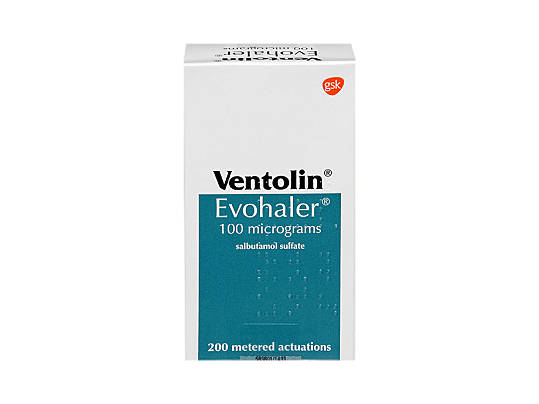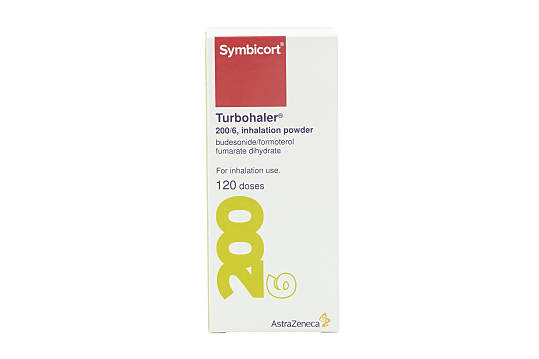Types of Asthma Inhalers
Order a prescription for your pharmacy of choice for Asthma Treatments.
Simply fill in a brief questionnaire. One of our doctors will review your order and prescribe a suitable treatment. How to Order
There are various types of asthma inhalers. They contain different types of medication, to provide fast relief or long acting prevention of asthma symptoms.
Asthma inhalers also have different mechanisms. While some require you to pump, others are breath activated. Whichever asthma inhaler you use, you must make sure you understand how it works.
Use our fast and convenient service at ZAVA to order the prescription for your asthma inhaler online.
Fill in our brief questionnaire to let our doctor know which inhaler you are using. Our doctor will make sure it is safe for you to continue your treatment before issuing a prescription to a local pharmacy in Ireland. Alternatively, you can choose to have your medication delivered directly to your door.
Please note, we can only treat patients who have been using an asthma inhaler for at least 3 months.
A consultation for asthma treatment prescription costs €21.50.
Asthma inhalers


No results found.
Please check your spelling or try another treatment name.



Types of asthma inhalers
What are the main types of asthma inhalers?
There are three types of asthma inhalers that use different mechanisms to release the medication. These include metered-dose inhalers (MDIs), MDIs with a spacer, which gives more time to inhale the drug, and dry-powder inhalers – also known as breath-activated inhalers.
The most common asthma inhalers are the brown inhaler (for prevention) and the blue inhaler (for attacks of asthma and/or prevention).
Metered-Dose Inhaler
The standard metered-dose inhaler includes the blue inhaler (Ventolin) and has been used for several decades. It consists of a small can fitted into a plastic body with a mouthpiece. Each time you press the canister into the boot, one dose of drug is released. You need to press and inhale the medication. This type of inhaler is also known as an evohaler.
Although it is the most commonly used inhaler, the MDI is often used incorrectly. Patients often forget to shake it before pressing, inhale at the wrong time or forget to hold their breath after inhalation.
MDI With a Spacer – Asthma in Children
Metered-dose inhalers that come with a spacer make it easier to inhale the correct dose. The spacer is an oval plastic container. On one end you insert your MDI and on the other end, there is a mouthpiece.
It means that you first release the medication into the spacer and then inhale it slowly from the plastic container through the mouthpiece; this delivers the dose straight to your lungs. The MDI with a spacer is particularly useful for people - and children with asthma – who lack the coordination skills to use the metered-dose inhaler correctly.
The spacer should be washed and cleaned regularly as your saliva can make its walls sticky and prevent the medicine from flowing smoothly from one end to the other. The spacer is also known as a chamber, depending on the brand you use.
Dry-Powder Inhaler – Breath-Activated Inhalers
This kind of inhaler contains dry powder. You do not need to pump or press for the medication to be released. All you need to do is take a deep breath which will make you inhale a single dose. There are different types of dry powder asthma inhalers and they usually rely on a manual mechanism to release one dose of the powder into the mouthpiece prior to the inhalation.
The most common dry powder inhalers are the turbohaler and the diskhaler. For both systems, you have to turn or twist the body until a “click” sound signals that a dose has been released and is ready to be inhaled.
Blue Inhalers – Bronchodilator Drugs
This is the most common group of inhalers (also called reliever inhalers) which contain bronchodilator drugs (usually salbutamol). Bronchodilator simply means that the drug allows the airways in your lungs to dilate and let more air in.
Blue inhalers are great short-acting treatment; they can relieve the symptoms of an asthma attack within minutes. They are also commonly used as a long-term treatment, following a specific prescription, e.g. 2-3 doses a day for a certain period of time (at least several months).
Brown Inhaler – Steroid Drug
The brown inhaler (sometimes also red) is a prevention treatment to be taken every day. It contains steroids that reduce the inflammation in your lungs. Depending on how severe your symptoms are, your doctor might prescribe you more or less frequent doses.
An average treatment with the brown inhaler consists of about two doses per day, to be taken for several months. Note that it can take somewhere between 2-6 weeks for the medication to be fully effective, so it is a long-term treatment that cannot be used to relieve the symptoms of an attack.
If you correctly follow your prescription, you may not need to use any inhaler later in your life. However, just as with the blue inhaler, early treatment with the brown inhaler is crucial to get rid of asthma.
Combination inhalers
Combination inhalers contain long-acting reliever medicine as well as preventer medicine. Examples include Symbicort Turbohaler. They come in different colours.
Like preventer inhalers, combination inhalers are used every day. If you use combination inhalers, you will also need a reliever inhaler to use when you get asthma symptoms because combination inhalers cannot relieve symptoms quickly.
Long-Acting Asthma Inhalers – Bronchodilator Drugs
These are less common and come in a different colour; they are usually green inhalers. They also belong to the class of bronchodilators and they are effective for up to 12 hours. Salmeterol is one of the most common long-acting bronchodilators, along with Formoterol.
In some cases, preventive treatments combine long-acting bronchodilators with steroids, for instance if your symptoms are particularly difficult to control. Some of these combined treatments come as purple inhalers.
The reason for different colours is to help you choose the right one when you are experiencing an attack, rather than having to recognise the name of the medication on the inhaler. When you need immediate relief from your symptoms (from breathlessness or an acute asthma attack) always go for the blue or purple inhaler.
Spacers
A spacer is an oval plastic container that is used with an inhaler to make it work better. You attach your inhaler to one end of the spacer. On the other end is a mouthpiece.
When you press on your inhaler, it releases the medicine into the spacer, then you inhale it slowly through the mouthpiece. This helps to deliver the medicine straight into your lungs.
The spacer should be cleaned regularly as your saliva can make its walls sticky, and stop the medicine from flowing smoothly from one end to the other. Spacers are sometimes called chambers.
How do inhalers work?
Metered-dose inhalers
The standard metered-dose inhaler (MDI) is a small can fitted into a plastic body with a mouthpiece. Each time you press the can into the plastic body, one dose of its drug is released. You need to press and inhale the medication. This type of inhaler is also known as an evohaler.
Although this is the most commonly used inhaler, the MDI is often used incorrectly. Patients often forget to shake it before pressing, inhale at the wrong time or forget to hold their breath after inhalation. It is now recommended that adults as well as children use an MDI with a spacer because it works better.
Dry-powder inhalers
There are different types of dry-powder inhalers (DPIs) and they usually rely on a manual mechanism to release one dose of the powder into the mouthpiece before it is inhaled.
The most common DPIs are the turbohaler and the diskhaler. For both systems, you have to turn or twist the body until a ‘click’ sound signals that a dose has been released and is ready to be inhaled.
Breath-activated inhalers
A breath-activated inhaler (BAI) also contains dry powder. You do not need to pump or press for the medication to be released. You just need to take a deep breath, which will make you inhale a single dose.
Types of inhalers
- Reliever inhalers help to stop acute symptoms when they happen
- Preventer inhalers reduce your risk of getting symptoms
- Combination inhalers function as both reliever and preventer inhalers
Inhaler colours
Each different type of inhaler generally has the same colour. This is to help you choose the right one when you are experiencing an attack, rather than having to recognise the name of the medication on the inhaler.
- Reliever inhalers are usually blue
- Preventer inhalers are usually brown
- Combination inhalers vary in colour

Dr Kathryn Basford is an IMC and GMC registered GP who works with our Irish team here at ZAVA. She graduated from the University of Manchester and completed her GP training at Whipps Cross Hospital in London.
Meet our doctorsLast reviewed: 08 Jan 2021
-
Asthma UK (2016). Asthma Inhalers, Medicines and Treatments. [online] Available at: https://www.asthma.org.uk/advice/inhalers-medicines-treatments/ [accessed 3rd June 2019].
-
NHS (2018). Asthma. [online] Available at: https://www.nhs.uk/conditions/asthma/ [accessed 3rd June 2019].







